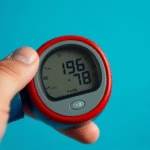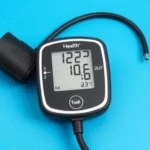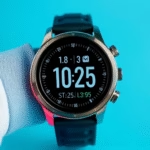In this article, we will be talking about how to assemble a blood pressure cuff. A blood pressure cuff, also known as a sphygmomanometer, is a medical device used to measure a person’s blood pressure. High blood pressure is a common health issue that can lead to serious conditions, which is why knowing how to correctly use this device is essential. The blood pressure cuff works by temporarily stopping blood flow and then gradually releasing the pressure to measure the blood pressure in your arteries during both the contraction (systolic) and relaxation (diastolic) phases of your heartbeat. Understanding how to assemble and use this device properly is important in monitoring your health and making informed decisions about your well-being.
Understanding Blood Pressure Cuffs
Blood pressure cuffs are an essential part of monitoring health. They are used primarily in the healthcare sector and can also be found in home health equipment. Understanding the different types of blood pressure cuffs, such as manual and automatic versions, can greatly enhance your ability to effectively manage your blood pressure. Manual cuffs require some level of skill to operate, while automatic cuffs are generally more straightforward to use. It is important to choose the right size of cuff as well. A cuff that is too small or large can result in inaccurate readings, which can lead to misdiagnosis or incorrect management of health conditions.
Learning how to assemble a blood pressure cuff begins with understanding its parts: the cuff itself, the pressure bulb (if manual), the gauge, and the stethoscope. Each of these components plays a critical role in the measurement process. Understanding the anatomy and function of these parts can aid in properly assembling and using the cuff to monitor your blood pressure accurately.
Choosing the Right Blood Pressure Cuff
When learning how to assemble a blood pressure cuff, the first step is to choose the right cuff for your needs. Blood pressure cuffs come in various sizes and types, each designed for specific measurements.
- Standard Cuffs: These are primarily used in clinical settings and come in different sizes to fit various arm circumferences.
- Pediatric Cuffs: Designed specifically for children, these cuffs are smaller and crucial for obtaining accurate readings in younger patients.
- Large Cuffs: These are used for patients with larger arms, ensuring accuracy in their blood pressure measurements.
- Automatic vs. Manual: Depending on your comfort and skill level, you may choose a fully automatic cuff, which simplifies the process by automatically inflating and providing results, or a manual cuff that offers more hands-on experience.
Knowing your arm circumference will help you choose the appropriate cuff size, which is critical for accurate measurements.
Assembling a Manual Blood Pressure Cuff
To assemble a manual blood pressure cuff, you will need to gather the essential components: the cuff, the pressure bulb, the gauge, and the stethoscope. Start by laying out the cuff on a flat surface, and ensure it is unrolled properly. The cuff should have a Velcro or secure fastening system to keep it in place on your arm.
Here’s a step-by-step guide to assembling it:
- Position the Cuff: Place the cuff around the upper arm, ensuring that the lower edge is about one inch above the elbow and that the bladder inside the cuff lies directly over the brachial artery.
- Fasten the Cuff: Secure the cuff snugly, but not so tight that it restricts circulation.
- Connect the Bulb: If using a manual design, attach the pressure bulb to the cuff’s inflation port.
- Attach the Gauge: Ensure that the gauge is properly connected to the cuff to provide an accurate reading.
- Use the Stethoscope: Place the stethoscope under the cuff over the brachial artery for monitoring sounds during inflation and deflation.
Following these steps, you can effectively assemble a manual blood pressure cuff, allowing you to check your blood pressure at home accurately.
Using an Automatic Blood Pressure Cuff
Assembling an automatic blood pressure cuff is quite simple, as these devices are designed for ease of use.
Follow these instructions:
- Position the Cuff: Just like with a manual cuff, position it on your upper arm, one inch above your elbow, with the bladder aligned over the brachial artery.
- Connect the Unit: Plug the cuff into the automatic machine, ensuring a secure connection.
- Power On: Turn on the device, and it usually will prompt you to not move during the reading.
- Take the Measurement: The machine automatically inflates the cuff. Monitor the display for your reading.
Using an automatic cuff is less labor-intensive and helps reduce errors caused by human error, making it ideal for general home use.
Maintaining Your Blood Pressure Cuff
To ensure accurate readings and the longevity of your blood pressure cuff, maintenance is crucial. Here are some tips:
- Regular Cleaning: Wipe the cuff and gauge with a soft cloth and mild disinfectant regularly.
- Inspection: Check for any signs of wear, such as cracks in the cuff or leaks in the tubing.
- Storage: Always store the cuff in a dry place, avoiding extreme temperatures as this can affect accuracy.
These maintenance steps can help keep your blood pressure cuff functioning optimally, ensuring that it provides reliable readings.
Factors Affecting Blood Pressure Readings
Understanding the factors that may influence blood pressure readings can enhance your proficiency in monitoring your health. Several elements can affect the outcome of your measurements:
- Body Position: Blood pressure can vary between lying down, sitting, and standing, so it’s important to keep a consistent position during measurements.
- Cuff Size: The fit of the cuff greatly affects the accuracy of the readings. Be sure to choose a cuff that fits your arm size correctly.
- Timing: Blood pressure can fluctuate throughout the day due to various factors like stress, diet, and physical activity. Consistent timing when taking measurements can yield more comparable results.
- Static Electricity: Ensure that the area is free from static electricity, which can interfere with the device’s accuracy, particularly in digital monitors.
Understanding these aspects can significantly improve your ability to monitor and manage your blood pressure effectively.
Reading Your Blood Pressure Measurement
Learning to read and understand your blood pressure measurements is essential to managing your health. Blood pressure readings consist of two numbers: systolic and diastolic. Systolic pressure (the top number) should ideally be less than 120, while diastolic pressure (the bottom number) should be below 80, categorized as normal blood pressure.
A reading of 120-129 systolic and less than 80 diastolic is regarded as elevated. A reading of 130-139 systolic or 80-89 diastolic indicates stage one hypertension, and readings of 140 or above systolic or 90 or above diastolic indicate stage two hypertension. It is important to consult a healthcare professional regarding the interpretation of your readings and what steps might be necessary depending on your specific results.
Common Mistakes When Using a Blood Pressure Cuff
Many individuals make mistakes that can lead to inaccurate blood pressure readings, which can affect health decisions. Here are some common errors to avoid:
- Improper Cuff Size: Using a cuff that’s too small or too large can yield misleading results.
- Incorrect Inflation: Over-inflating or under-inflating the cuff can affect the reading.
- Body Movement: Moving or talking during the reading can lead to fluctuating results.
- Skip Measurements: Consistency is crucial, thus skipping measurements can provide an inaccurate representation of your blood pressure.
Being aware of these common mistakes significantly enhances accuracy when checking your blood pressure.
Tracking Your Blood Pressure
Keeping a log of your blood pressure readings is essential for monitoring your health effectively. This not only helps in tracking trends but also assists healthcare providers in making informed decisions regarding treatment. A systematic approach involves:
- Consistency: Measure your blood pressure at the same time each day to track fluctuations accurately.
- Recording Results: Use a diary or digital application to log your results along with the time, position, and any other relevant notes.
- Reviewing With a Professional: Regularly sharing this information with your healthcare provider can guide necessary adjustments in treatment or lifestyle changes.
By tracking your blood pressure diligently, you gain insight into your health status and gauge the effectiveness of any interventions or lifestyle modifications.
Conclusion
In summary, knowing how to assemble a blood pressure cuff is critical for anyone looking to manage their blood pressure effectively. From understanding what blood pressure cuffs are and the importance of choosing the right one to dilating assembly and proper usage techniques, each element plays a significant role in ensuring accurate measurements. Regular maintenance, awareness of factors affecting readings, proper interpretation of results, and tracking your blood pressure can elevate your health management.
Monitoring blood pressure at home can significantly empower you to take charge of your health. Blood pressure problems are common, yet many face them without the necessary knowledge to manage their condition effectively. By familiarizing yourself with the components of a blood pressure cuff, best practices for assembly, and usage guidance, you put yourself in a better position to monitor your blood pressure with confidence.
Each person’s body is unique; therefore, consulting a healthcare professional about your readings and managing your health is invaluable. With the information presented in this article, individuals can take steps towards a more proactive stance on their blood pressure and overall health.
Frequently Asked Questions
1. How do I know if I am using the right size blood pressure cuff?
To determine the right size of blood pressure cuff, measure the circumference of your upper arm. Most manufacturers supply a sizing guide that correlates arm size with cuff dimensions—make sure to follow these recommendations for accurate measurements.
2. How often should I check my blood pressure at home?
Most health professionals recommend checking your blood pressure once in the morning and once in the evening, but it’s best to follow your healthcare provider’s recommendations based on your individual health needs.
3. Can I use an automatic blood pressure cuff instead of a manual one?
Yes, an automatic blood pressure cuff is suitable for home use since it simplifies the measurement process. It inflates the cuff automatically and provides a reading without needing a stethoscope. Choices between the two depend on comfort and personal preference.
4. What factors can affect the accuracy of blood pressure readings?
Factors that may affect your readings include cuff size, body position (sitting, standing, or lying), activity level, timing of measurements, and external stressors like noise or static electricity.
5. Can my blood pressure readings fluctuate during the day?
Yes, blood pressure can fluctuate throughout the day based on physical activity, emotional stress, posture, and other factors. It’s important to consider this variability when monitoring your blood pressure and consult your healthcare provider for a full assessment.
Further Reading
What Type of Psychotherapy Is Best for Anxiety?







